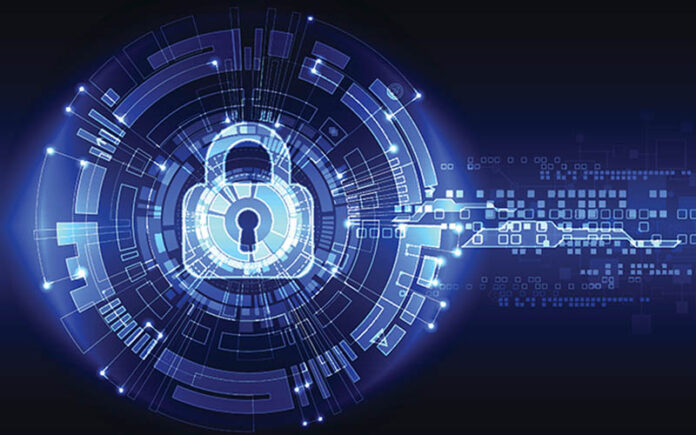
A referendum on an important matter is about to take place. It will decide the country’s future and determine what the next 50 years will look like. 30 million votes are expected to come in. The result will be a close call so the last thing you’d want is outside meddling. Intrusion could tip the scale, override democracy, and plunge the people into something they didn’t vote for. A not-so-small detail about the process: the votes will be stored in digital systems.
This is where cybersecurity plays a pivotal role.
It aims to protect the system from intrusions and keep the digital world safe. It’s not just the government that benefits from it – it’s also finance, cultural institutions, and even our own personal computers.
In 2017, global spending on IT security reached $52 billion. By 2022, it rose to a whopping $71 billion. In an effort to make the digital world less hospitable to cybercriminals, the use of blockchain in cybersecurity has recently emerged as a potential solution.
What’s a blockchain?
Let’s first figure out what’s what. A couple of clear definitions should help a layperson get a good grasp of the core topic.
Blockchain. A distributed ledger. It comprises a growing list of records, also known as blocks. These are linked in the form of a chain by cryptographic hashes. Each contains transaction data and a time stamp. Once created, it can’t be altered on an individual basis. Blockchains aren’t centralized but are instead managed by P2P networks. Bitcoin is the most famous example of blockchain in action.
Cybersecurity. Information technology (IT) security. Protection of computer systems and networks from malicious attacks. It aims to prevent information theft, damage to technology, and disruption of services. It’s particularly important in large-scale systems such as government, corporations, finance, and a long etcetera.
How does it connect to cybersecurity?

The obvious question is — how do blockchain and IT security feature in the same picture? Let’s take the example of passwords. They are possibly the least secure way of keeping information under lock and key. Keeping them stored in one place is a surefire way of exposing yourself to data theft.
Using blockchain in cybersecurity, on the other hand, enables the entire system to bypass the need for a central authority. As its name implies, it’s a chain with parts scattered around a peer-to-peer network. This makes it difficult to track and target. Decentralized storage of critical data makes it a lot less accessible to attackers. The inalterability of individual blocks also makes it next to impossible to tamper with.
The power of encryption
If you thought that’s all distributed ledgers have to offer — guess again. They have plenty of other tricks up their sleeve. Encryption, the most traditional cybersecurity tool imaginable, works well with blockchain. It’s a mathematical process of converting data into code to prevent unauthorized access. By default, it contains an algorithm that must be solved to grant access.
The same goes for distributed ledgers. A new block can only be created and added to the chain if it is previously verified. Cryptographic algorithms are used to turn strings of plaintext into ciphertext. They can only be decrypted by using a key or a signature. Leveraging these digital signatures can secure communication, authenticate devices, validate configuration changes, and help with many other tasks.
Maintaining the integrity of software downloads

In addition, blockchain technology can provide data transmission protection. With the help of encryption, it shields the integrity of software downloads. Distributed ledgers can verify updates and installers with the help of hashes. Hashes are numbers generated by a hash algorithm from an input text. They serve as “digital fingerprints” and are able to verify the integrity of downloads. This, in turn, prevents malware from infiltrating the process and infecting devices.
Preventing large-scale DDoS attacks
Another convenient way of using blockchain in cybersecurity is the prevention of DDoS attacks. Many will remember the 2016 internet outage. This occurred due to orchestrated distributed denial-of-service attacks. Basically, it’s an artificially created flood of internet traffic that clogs up the infrastructure. The solution is rather simple. A blockchain-based domain name system (DNS) can bypass the need for a single point of access. This, in turn, makes such attacks impossible.
It’s all transparent!
Another great thing about blockchain is that, once the blocks are in place, they remain unalterable — unless you alter all the other parts of the chain. Needless to say, this isn’t exactly easy. The segments thus remain as they are. The blocks carry a detailed history of all transactions as a unique digital signature. This makes tracing each and every activity possible at any time in the future. Talk about a great way to maintain transparency.
The challenges of using blockchain in cybersecurity

Today, multinational corporations and governments want to adopt blockchain as a part of their security toolbox. Yet, intertwining it with existing features requires an evolving approach which, naturally, comes with its own risks and challenges.
Regulations can be a substantial obstacle, especially for a comparatively new type of technology. For example, data privacy and compliance laws in the EU allow for a ‘right to be forgotten’ — having your personal data deleted at your own request. This isn’t exactly easy when it comes to blockchain.
Scalability is another common challenge. Blockchain is a type of technology in which every block stores, processes, and maintains transactions. As the number of transactions goes up, so does the complexity increase — slowing down the validation process. This can be a problem for small businesses with limited computing storage resources.
Of course, there’s also room for human error, ranging from improper key management and access control to inadequate encryption scheme selection.
It’ll only get bigger
Despite these challenges, the implementation of blockchain in cybersecurity is marching forward. Technology is becoming an integral part of it — and for a reason. The numerous benefits include reduced costs of security, increased efficiency, easier optimization, and, most importantly, improved security of financial transactions.
Blockchain reduces vulnerabilities by providing robust encryption, verifying data ownership, and maintaining integrity each step of the way. Today’s hackers don’t have an easy task.
















